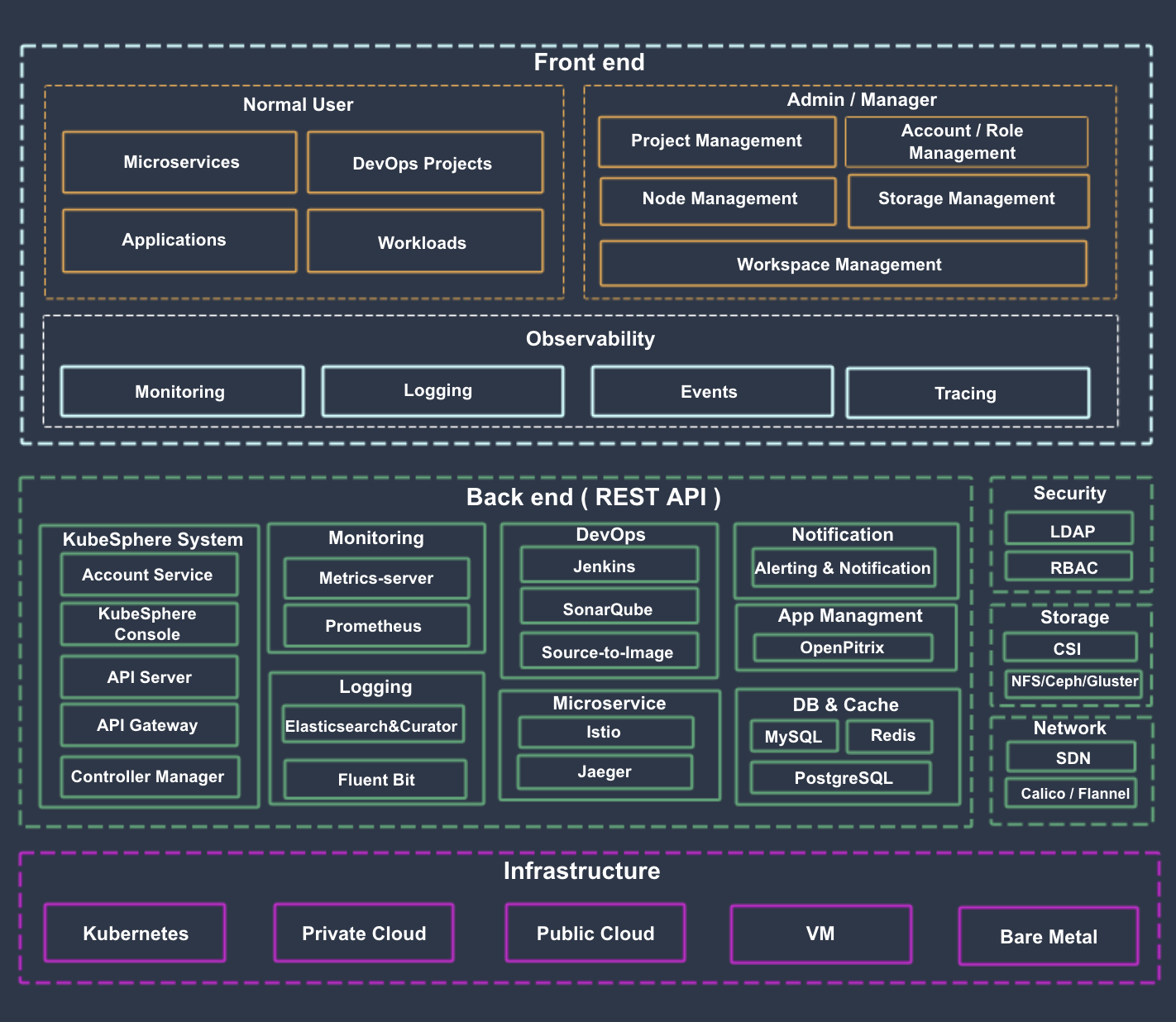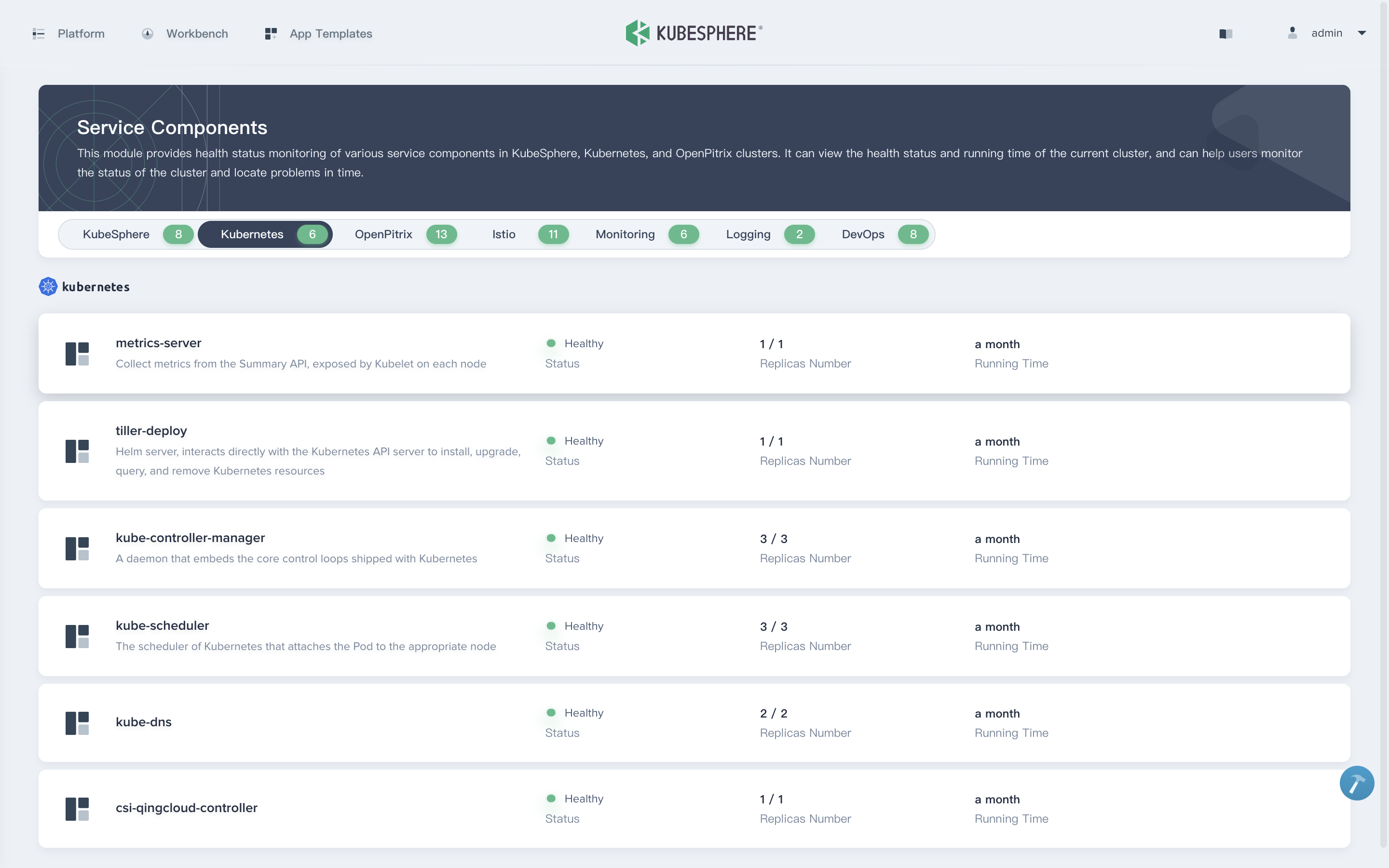v2.0
v1.0
Installation
Intruction
Install on Linux
Install on Kubernetes
Related Tools
Cluster Operation
Quick Start
Cluster Admin Guide
Multi-tenant Management
Platform Management
Infrastructure
Monitoring Center
User Guide
Storage
Configuration Center
Project Settings
Development Guide
API Documentation
KubeSphere®️ 2020 All Rights Reserved.
Architecture
Separation of front and back ends
KubeSphere adopts the separation of front and back ends, also realizes a cloud native design, the back ends' service components can communicate with external systems through the REST API, see API documentation for more details. All component are included in the architecture diagram below. KubeSphere can run anywhere from on-premise datacenter to any cloud to edge. In addition, it can be deployed on any Kubernetes distribution.

Components List
| Back-end component | Function description |
|---|---|
| Ks-account | provides API relating to the user and the privilege management |
| Ks-apiserver | The API interface of the entire cluster management, the communication hub between the modules within the cluster, and the cluster security control |
| Ks-apigateway | isresponsible for handling service requests and all tasks |
| Ks-console | offers KubeSphere console service |
| Ks-controller-manager | implements business logic, such as creating corresponding permissions for enterprise space; Or when creating a service policy, generate the corresponding |
| Metrics-server | Kubernetes’ monitoring component collects Metrics information from Kubelet of each node. |
| Prometheus | provides clusters, nodes, workloads, API objects and other related monitoring data and services |
| Elasticsearch | provides cluster log indexing, querying, data management and other services, which can also be used to reduce resource consumption at the time of installation against your existing ES |
| Fluent Bit | enables log receiving and forwarding. Collected information can be send to ElasticSearch, Kafka |
| Jenkins | provides CI/CD pipeline service |
| SonarQube | is an optional installation that provides code static checking and quality analysis |
| source-to-image | will automatically compile and package the Source code into Docker Image, which is convenient to quickly build Image |
| Istio | provides microservice governance and traffic control, such as grayscale publishing, canary publishing, fuse, traffic mirror and so on |
| Jaeger | collects Sidecar data and provided the distributed Tracing service |
| OpenPitrix | provides application templates, application deployment and management services |
| Alert | provides custom Alert service |
| Notification | is an universal Notification service; it currently supports mail Notification |
| redis | stores the data of ks-console and ks-account in the memory storage system |
| MySQL | is the cluster back-end component database for monitoring, alarm, DevOps, OpenPitrix Shared MySQL service |
| PostgreSQL | SonarQube and Harbor's back-end database |
| OpenLDAP | is responsible for centralized storage and management of user account information and docking with external LDAP |
| Storage | built-in CSI plug-in docking cloud platform storage services, have optional installation of open source NFS/Ceph/Gluster client |
| Network | can optionally install Calico/Flannel and other open source network plug-ins to support docking with cloud platform SDN |
3rd Party Tools
In addition to the components listed above, KubeSphere also supports Harbor and GitLab as optional installations that you can install according to your project requires.
Service Components
Each component has many service components, see Service Components for more details.
